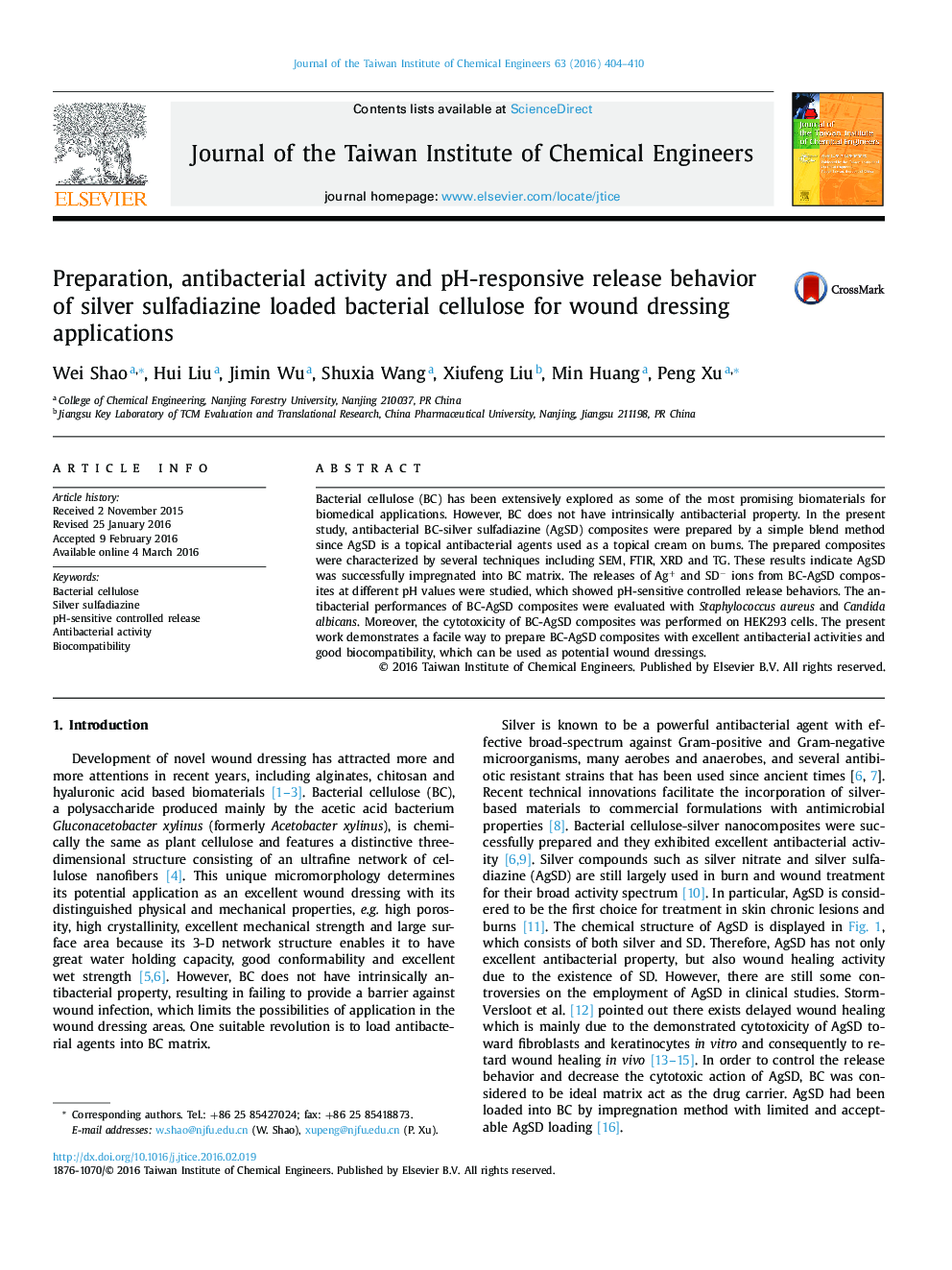| Article ID | Journal | Published Year | Pages | File Type |
|---|---|---|---|---|
| 690428 | Journal of the Taiwan Institute of Chemical Engineers | 2016 | 7 Pages |
•Bacterial cellulose (BC)-AgSD composites were successfully prepared.•BC-AgSD composites have pH-sensitive controlled release behaviors.•BC-AgSD composites exhibited excellent antibacterial activities.•BC-AgSD composites showed good biocompatibility.•The prepared composites have great potential application in wound dressing applications.
Bacterial cellulose (BC) has been extensively explored as some of the most promising biomaterials for biomedical applications. However, BC does not have intrinsically antibacterial property. In the present study, antibacterial BC-silver sulfadiazine (AgSD) composites were prepared by a simple blend method since AgSD is a topical antibacterial agents used as a topical cream on burns. The prepared composites were characterized by several techniques including SEM, FTIR, XRD and TG. These results indicate AgSD was successfully impregnated into BC matrix. The releases of Ag+ and SD− ions from BC-AgSD composites at different pH values were studied, which showed pH-sensitive controlled release behaviors. The antibacterial performances of BC-AgSD composites were evaluated with Staphylococcus aureus and Candida albicans. Moreover, the cytotoxicity of BC-AgSD composites was performed on HEK293 cells. The present work demonstrates a facile way to prepare BC-AgSD composites with excellent antibacterial activities and good biocompatibility, which can be used as potential wound dressings.
Graphical abstractFigure optionsDownload full-size imageDownload as PowerPoint slide
